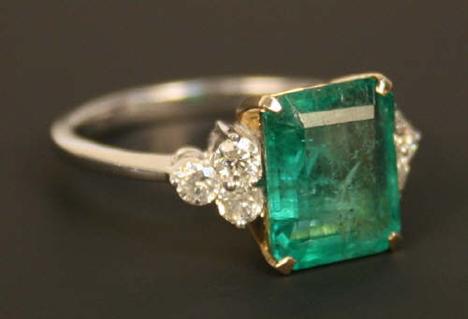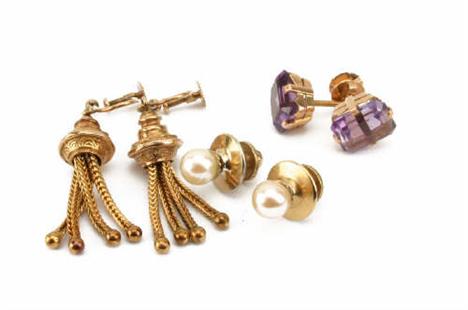We found 26534 price guide item(s) matching your search
There are 26534 lots that match your search criteria. Subscribe now to get instant access to the full price guide service.
Click here to subscribe- List
- Grid
-
26534 item(s)/page
Miscellany of items to include Midland Railway Step tread; LMS ceramic 2 pin socket with a brass flip cover stamped 'LMS 54/58373'; LNWR circular C/I Electric Light Controller cover showing On - Off; BR alloy Doorplate states 'B.R. Bank Top'. Was one time in use on an office door at the Darlington loco depot. Measures 15½" x 2 ¾".qty 7 railway company marked Spanners; WH Davies Wagon Plate; Westinghouse Braked alloy triangle sign; Birfield alloy nameplate; BR Lights On - Off alloy sign; Henry Berry Co Leeds England makers plate; British Railways alloy plate; BR (M) circular alloy plate rear marked 'Hedenesford No3 Signalbox demolished 1982'; a few other brass equipment and maker plates. A good assortment well worth viewing.
NAPOLEON I: (1769-1821) Emperor of France 1804-14, 1815. Note signed, N, at the head of a L.S., Fontainebleau, 27th August 1807. Napoleon has signed his initial at the base of a short note in a secretarial hand stating that the letter should be sent back to Aldien who is to present him a report, a bill and a decree. The note appears on a L.S., Eugene Napoleon, by Eugene Napoleon (1781-1824, Viceroy of Italy, son of Empress Josephine and adopted son of Napoleon), three pages, folio, Milan, 17th August 1807, to the Emperor. Eugene Napoleon writes concerning an account by General Marmont of the 'measures he felt it necessary to take for the exemplary punishment of several men from Dalmatia, convicted of conspiracy against your Army' and further comments on a similar report received from Dandolo. Eugene offers his opinions to the Emperor, suggesting that Dandolo can no longer do any good in Dalmatia whilst General Marmont is there, 'the title of "General Provediteur" is one of the main causes of all the mistakes into which Dandolo has fallen, since this title recalls and supposes rights which your Majesty did not intend to give to the administrator of Dalmatia, and which Dandolo has believed himself entitled to exercise in full measure.' Napoleon continues to offer a solution with a different organisation to the power and administration of Dalmatia, suggesting that a Military Governor General should be installed to report to the Emperor or himself, with an administrative prefect to take care of all police and military matters and two or three further Vice-Prefects to handle all administration. The Viceroy continues to present the Emperor with three names of men he considers would be suitable for the position of administratior, listing Vismara, Brunetti and Bossi. He states that all are devoted to his step father, although additionally comments 'The first is a man whom I believe a weak character, but who certainly has administrative talent, and whose weaknesses would be less of a disadvantage in Dalmatia than anywhere else, since it would be the Governor's job to deploy force. As for the second, Your majesty knows him even better than I, but he is presented by everybody as being very capable….' In concluding Napoleon states that he will await instructions. An attractively penned letter of interesting content, bearing the signatures of both Napoleon Bonaparte and Eugene Napoleon. VG
McAndrew, J (Cruden Bay) - "Golfing Step by Step" 1st ed c1910, in original gilt stamped leather pictorial boards, full gilt lined pages with numerous photographic illustrations including a frontis piece of the author, (some fading to spine and slight rubbing to corners), very clean tight copy.
A peridot and diamond ring, the step cut enclosed by small brilliant cuts, to a 9 carat hallmarked gold shank, finger size R; with a peridot and diamond ring of cross over design, the 9 carat gold hallmarked shank finger size M1/2; a five stone aquamarine ring with single cut diamond points between, finger size R1/2; and a pink tourmaline and diamond cluster ring, the oval cut enclosed by single cuts, the 9 carat hallmarked shank finger size Q1/2 Visit www.dnfa.com for condition reports.
A THORNYCROFT BUILDER'S HALF-BLOCK MODEL FOR THE TORPEDO BOAT DESTROYER SHAKESPEARE, BUILT FOR THE ROYAL NAVY, 1917, YARD NUMBER 903. finished in white and mounted on an ebonised board for wall hanging, 85N x 9Din. (218 x 23.5cm.), The name ship of a class of seven, of which two were cancelled, Shakespeare was a marked step forward and as flotilla leaders were much admired by foreign navies. Displacing 2,009 tons (deep load) they measured 329ft overall, with 31ft 6in. beam and 12ft 6in. draught, powered by 2-shaft Brown-Curtis geared turbines developing 40,000 horse power, they could make 36 knots and were armed with 5-4.7in. guns adapted from army stocks, 2-2pdr pom-poms and, 6-21in. torpedo tubes and needed a complement of 183 personnel. The addition of a 9ft rangefinder plus torpedo sights marked a huge improvement in fighting efficiency. Shakespeare was broken up in 1936.
PIETER TILLEMANS (FLEMISH 1684-1734). A GREY MARE AND A FOAL IN AN EXTENSIVE HILLY LANDSCAPE. Signed, oil on canvas. 172.7cm x 151.2cm (68in x 59.5in). Provenance:John Sheppard Esq, Campsey Ash High House. Note: Along with John Wootton and James Seymour, Peter Tillemans is one of the founding artists of the British Equestrian Painting School. Born in Antwerp and the son of a diamond cutter Tillemans studied under various artists but was chiefly influenced by the Flemish school of painting of Brueghel and David Teniers the Younger as opposed to the voluptuous Baroque style of Peter Paul Rubens. Tillemans moved to England in 1708, quickly becoming a prominent figure in the art and sporting circles. In 1711 he was among the group who met in Great Queen Street, in London, to form the first Academy of Art in the country. He was extensively patronised by the British aristocracy, including the Dukes of Bolton, Devonshire, Rutland and Somerset and the Earls of Derby and Portmore; he also acted as the drawing-master to Lord Byron's family. As exemplified in the present painting, Tillemans painted a series of very large and impressive horse 'portraits', which proved so popular that a series of engravings and mezzotints were created from them. These were an important step in the development of horse portraiture in England as little work had been done on Equine anatomy until then. Tillemans in particular insisted on depicting the subjects in these series of portraits in 'different actions and postures', as noted on the inscription for the first of these series. He treats his subject with much sensitivity and attention to detail. As one of England's foremost equine artists Tillemans worked at Newmarket, producing impressive compositions such as his 1722 large panoramic view of 'George I and his court on Newmarket Heath', 'Starting point of the Beacon Course at Newmarket' and 'End of the Beacon Course'. With Wootton and Seymour he led developments in English art which "show the first marriage of the topographical tradition of landscape with a sporting element"(Ellis Waterhouse, Painting in Britain, 1530 to 1790, Baltimore, MD: Penguin, 1953, p. 215.)
Jean Louis Gregoire (1840-1890): A Bronze Figure of a Nude Goddess, with forward step, gazing upwards to an arched branch on which two swallows perch upheld in her outstretched hands, on a bowfronted rectangular rustic plinth, signed, 113cm high See illustration. Jean Louis Gregoire was born in Paris, 13 December 1840. He died there in 1890. He studied under Samson and exhibited at the Salon from 1867. He was one of the first Associates of the Artistes Francais. He specialised in allegorical bronzes such as Truth.
An Art Nouveau green tourmaline and seed pearl brooch, the step cut green tourmaline set within an openwork stylized heart to a frond set with seed pearls, restored, 50mm long, together with an Edwardian pendant of openwork foliate design, set with amethysts and seed pearls, the mount stamped 15ct, suspended on a yellow chain, the pendant 45mm long (2)
A Victorian gold, aquamarine and seed pearl brooch, circa 1890, the circular mixed-cut aquamarine millegrain collet set on knife edge bar within a circular frame set with half pearls, on an oblong bar mount inset with half pearls. Stamped 15ct; A Victorian garnet and gold bar brooch, circa 1890, the step-cut garnet collet set on knife edge bar and A Victorian silver brooch, circa 1890, modelled as a riding crop with a horse's head in profile to the centre (3). Not illustrated
-
26534 item(s)/page





















































